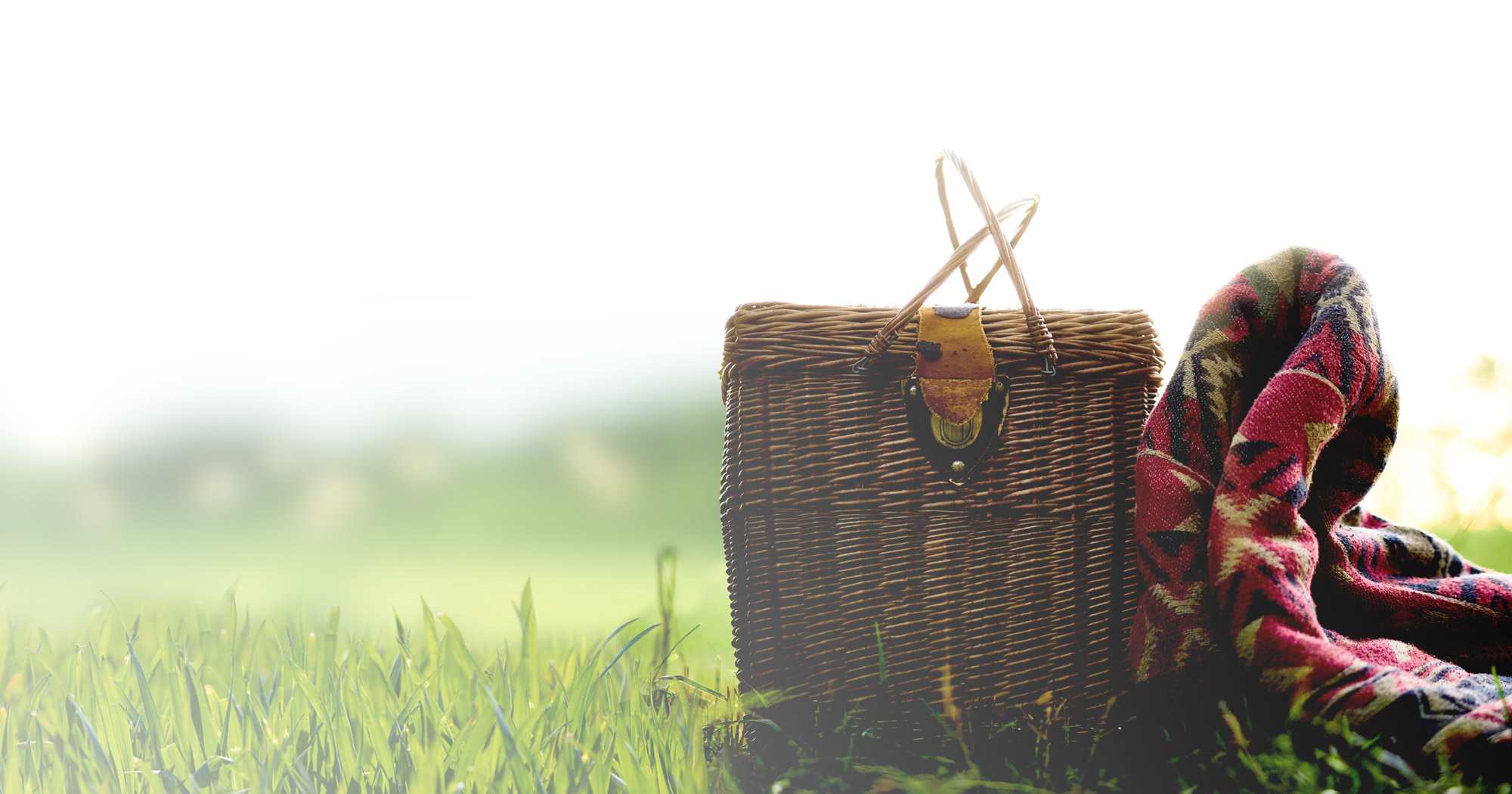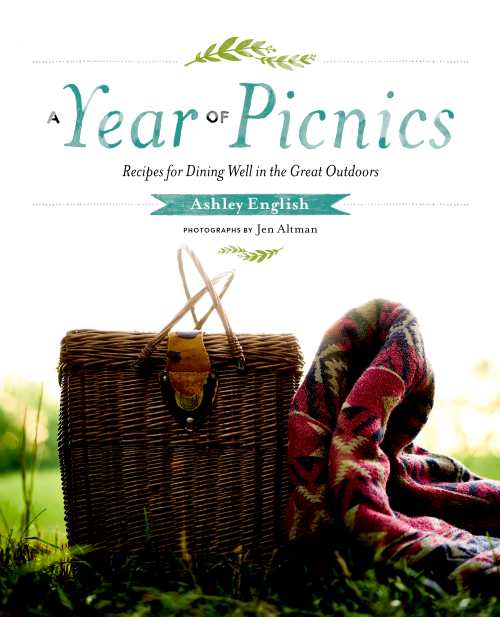Any Day is a Picnic Day

Doesn’t a picnic sound fun and relaxing right about now? Yeah, it’s February, and depending on where you live, the weather might not be ideal. But, according to Ashley English, a leading picnicologist (I just invented that word to make it sound scientific), anybody can enjoy a picnic any time of year, no matter the weather. She wrote about her all-weather picnic experiments in A Year of Picnics: Recipes for Dining Well in the Great Outdoors (Roost Books). In our interview below, she talks comfort food, environmental friendliness, and how not to invite bears to your picnic.
We live in stressful times. A picnic with family and friends just might be the antidote. What’s the best comfort food for a picnic?

Ashley English: 'Comfort food for picnicking should involve anything handheld.'
What constitutes “comfort food” will vary widely from person to person, but, at its core, I think comfort food for picnicking should involve anything handheld. From sandwiches, to chips, to dips (and their dippers), to handheld treats, if a food can be eaten by hand, it tends to offer a high degree of comfort. I’d further add that picnicking comfort foods shouldn’t be fussy. That is to say, no temperamental foods, like soufflés, or French fries, or foods otherwise meant to be taken directly from the oven or stovetop to the table for serving. Comfort picnicking foods should be forgiving, and not terribly cumbersome.
Foreword Reviews’ offices are located in Northern Michigan, where winters can be a bit long and harsh. What do you recommend for winter picnics up here?
Anything warming and robust and hearty! The “Winter Picnic” in my book offers a warming meat-based stew. It’s served alongside pickles and a cranberry sauce, with s’mores brownies for dessert, all of which are deeming satiating. I’d be sure to also include a thermos of something warming, as well, whether that comes in the form of hot chocolate, a strong Earl Grey, or hot toddies. Winter picnics are best when they involve warming activities, too, so bonfires or nearby ice skating, or snow play, or simply a bit of a walk to the picnicking vacation will all help add some internal heat to the occasion.
Can you list a couple of environmentally friendly factors our readers should consider before planning their next picnic?
For starers, I aim to avoid disposables at any cost. To that end, I pack all of my picnicking foods and beverages in reusable containers. Lightweight metal, wooden vessels, compostable or reusable flatware, and cloth napkins are my picnicking go-to’s. I also regularly use Bee’s Wrap for wrapping up foods in lieu of plastic wrap/bags or aluminum foil. I also always bring an extra container, or simply a brown lunch bag, for putting compost scraps into.
A major drive for me in writing A Year of Picnics was my deep belief that spending time in nature tends to foster a desire to steward the Earth. To that end, I strive to keep my picnics as environmentally friendly as possible. This also extends to being mindful when out in natural, wild environments by staying on marked trails (and off of fragile, off-trail habitats), not harvesting any plants that are potentially endangered, and leaving the picnicking location as pristine as I found it.
Where is the best place you have ever had a picnic?
Oh, wow! It’s so hard to choose, as I’ve picnicked in such a variety of locations. I don’t know if it’s the “best,” but I certainly did find the picnic held up at Black Balsam, North Carolina deeply memorable (it’s the site of the “High Altitude Picnic” in the book). A mountain bald located on the Blue Ridge Parkway at 6,214 feet elevation, Black Balsam offers 360 degree panoramic views of the Blue Ridge Mountains. It is a profoundly beautiful, majestic location, and picnicking there felt like we were sitting on top of the world, enjoying all of its riches.
Any advice for keeping bugs and other critters away from your food while you enjoy eating outdoors?
I offer a recipe for homemade, all-natural bug repellent in the book. It’s highly effective while also offering a lovely fragrance, which isn’t always the case for bug repellents. I might also suggest bringing along some citronella incense sticks. Available in both long and short forms, burning these sticks at the picnicking site (and safely extinguishing them and packing them back out with you when departing) goes a long way towards keeping biting creatures at bay.
As for bears in the vicinity of your picnic (if you’re picnicking in a location known to house bears), I encourage people to make plenty of noise. While I’m certainly not advocating lots of yelling and screaming or playing loud music, I am suggesting chatter and conversation that lets bears know humans are in the vicinity. It’s also helpful to bring along a bear whistle in such locations, in the event that you should encounter a bear en route to your picnicking site. These can be readily purchased at outdoor activity retailers as well as online.

Howard Lovy is executive editor at Foreword Reviews. You can follow him on Twitter @Howard_Lovy
Howard Lovy
